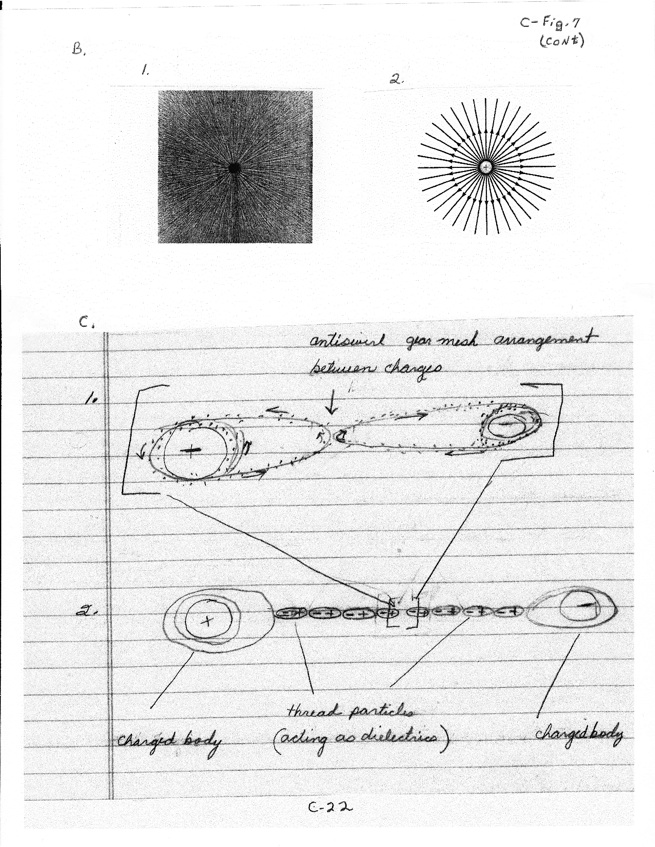

C-Fig. 7 (continued).
B. Electric-field lines of an isolated point charge. Although conditions can be created such that the photographs of electric dipole patterns (A-1) are similar to those for magnetic poles (A-3), a single, isolated point charge (B-1 and B-2) generates a different pattern from an isolated magnet (A-4).
C. Interpretation of the electrostatic bond associated with dipoles. The electrostatic bond is a function of the interactions of criton swirls of charges. It is the same type of bond that forms the hydrogen atom shown in C-Fig. 3 C.
1. When opposite charges are held apart at relatively low velose levels the bond can form over an extended interval (C-1).
2. The electric fields of the charged particles induce opposite charges on the ends of each bit of thread, causing the threads to align themselves plus end to negative end. Thus the silk thread field lines in oil represent a chain of dielectric particles (C-2). The criton swirl for each individual charge begins and ends on the charge. The engines that drive the inductions of the electric dipoles are the respective mother charges. Since the lines formed by the threads of an isolated charge appear to remain repulsive, it is suggested that respective portions of the thread lines are incased in governing swirls for each respective mother charge. Although the interactions presented in Fig. 30 are in play, the induction capacities at the ends of the thread segments leave residual criton tracks emanating from the mother charge.
